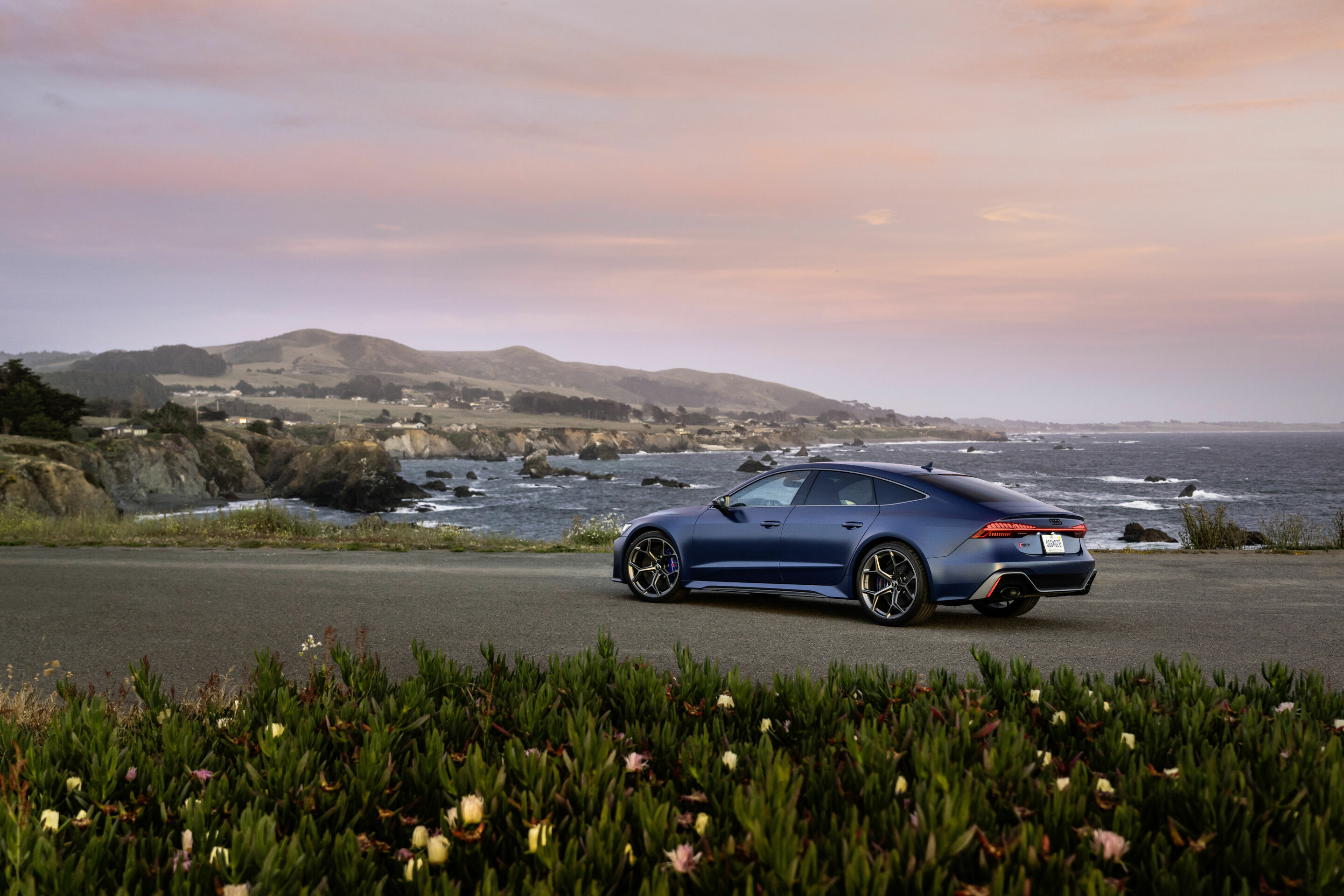Body
Back to overviewThe body concept for the RS 7 combines the best of three worlds: the design of a coupé, the space of a sedan, and the variability of an Avant. The luggage compartment has a base size of 535 liters (18.9 cu ft) and can be expanded up to 1,390 liters (49.1 cu ft) despite a sloping tailgate. The interior is extremely quiet thanks to highly advanced aerodynamics and aeroacoustics. The long tailgate opens and closes electrically as standard or via foot gesture with the optional convenience key.
For the structure of the RS 7 Sportback’s body, Audi Sport has chosen to use an intelligent mixture of materials. Combined ultra-high-strength hot-formed steel components form the backbone of the passenger compartment, accounting for 23.9 percent of the weight of the structure. It is used primarily in the lower section of the front bulkhead, the side sills, the rear cross member, the B-pillars, and the front zone of the roof line. Here and in other areas of the body, Audi uses sheet metal blanks in many places with variable wall thicknesses between 0.75 and 2.05 millimeters (0.03–0.1 in).
They provide high strength while keeping the weight low. These tailored blanks are created by partial tempering and by complex processes during rolling or welding.
The aluminum components in the body-in-white weigh a total of 10.9 kilograms (24.0 lb). The strut dome and reinforcements in the roof frame are made of cast aluminum, as are the strut brace in the engine compartment and the central cross brace under the floor of extruded sections. An aluminum sheet supports the B-pillars, and the upper shell of the rear roof frame is made of a steel/polymer mix. The doors, hood, and luggage compartment lid are made entirely of the lightweight metal. The curb weight (without driver) of the Audi RS 7 Sportback is 2,065 kilograms (4,552.5 lb).
At almost the same length and height as its predecessor, the Audi RS 7 Sportback has a larger interior, translating an extra 14 millimeters (0.6 in) of wheelbase into a gain of 21 millimeters (0.8 in) of interior length. The grand tourer also offers more leg, knee, and head room on the rear seats.
The extra space in the interior and the increased torsional rigidity of the body of the RS 7 Sportback help to make for a more comfortable ride as well as a sportier experience.
All terms marked in the text are explained in detail in the technology lexicon at www.audi-mediacenter.com/en/technology-lexicon.
The equipment, data and prices specified in this document refer to the model range offered in Germany. Subject to change without notice; errors and omissions excepted.
